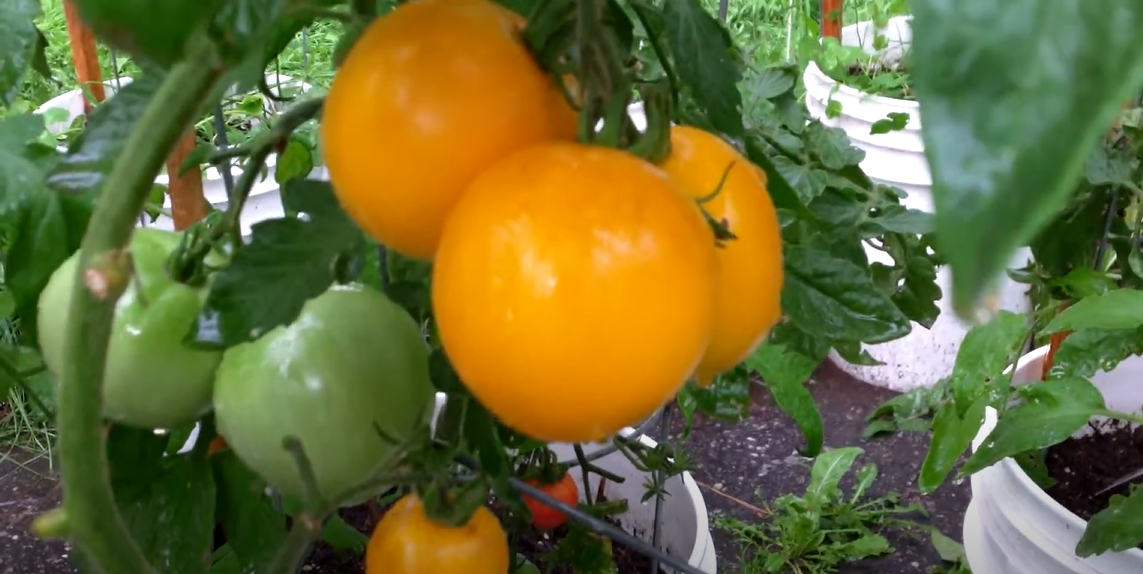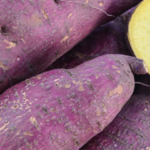Lemon Boy tomato is a rounded lemon-yellow slicing tomato that has a mild flavor. It is a hybrid indeterminate fleshy tomato, with some disease resistance, that was developed in the United States. Lemon Boy is suitable for slicing and is used on sandwiches, in salads, and when making pasta among other delicious culinary applications.
What is Lemon Boy Tomato?
Although ripening with a lemon-yellow color, Lemon Boy is a legitimate member of the tomato species Solanum Lycopersicum just like Roma tomatoes, beefsteaks, Yellow Pear, or Celebrity tomatoes. Vegetable family members under the Nightshade family include potatoes (excluding sweet potatoes), peppers, and eggplant.
As much as the Lemon Boy tomato starts off green, unlike regular tomatoes, the tomato does not turn red when ripe but yellow to orange in color. This is because it is a different cultivar from red tomatoes in a similar way to green or black tomatoes.
Lemon Boy tomatoes are indeterminate tomatoes. Being of indeterminate habit means Lemon Boy tomato is a vining plant that continues to grow and produce as long as conditions permit. In many cases, the plant, like most indeterminate tomatoes, will need some support such as a trellis or cage.
Lemon Boy is a wonderful slicing tomato with a mild flavor. It has a pleasant tangy taste and is not as sweet or tomatoey as red tomatoes. Although named Lemon Boy, it does not taste like lemon fruit. The lemon name is more to do with its color when ripe. Suitable applications of the tomato include sandwiches, burgers, salads, pasta, and tomato mixes when making salsa, say for Mexican Chilaquiles Rojos.
Why is Lemon Boy Yellow?
The reason why Lemon Boy tomato along with other yellow tomatoes such as Yellow Pear is yellow is genetic. Tomato color is determined by carotenoids, themselves naturally occurring pigments in plants. A carotenoid called lycopene is responsible for the red color in red tomatoes while others called lutein and zeaxanthin are responsible for the yellow in yellow tomatoes.
According to the journal Molecules, yellow tomatoes have lower levels of carotenoids compared to red and orange tomatoes. This makes sense because the natural progression of tomatoes when ripening is a switch from green to yellow, to orangish, and then red.
Carotenoids in yellow tomatoes offer certain health benefits, in particular, eye health, according to the journal Nutrients. Furthermore, according to EXCLI Journal, lutein has “antioxidant, anti-inflammatory, antiatherogenic, antihypertensive, antidiabetic, antiulcer, and anticancer effects”. Going by this scientific report, Lemon Boy tomatoes have some real health benefits to offer.
Lemon Boy Tomato Origins
The historical record on the development of the Lemon Boy tomato is not as straightforward. However, the tomato is one of the many disease-resistant tomato cultivars originally developed by Petoseed. Lemon Boy is said to have been released by the company onto the United States market some 40 years ago in 1984.
Other common tomato cultivars from Petoseed include Celebrity and Better Boy both of which are renowned for their uniform shapes and disease resistance. Petoseed was eventually acquired by different companies along the way and the name was abandoned. Today, the original Petoseed is in Bayer.
Under Bayer, another variety called Lemon Boy Plus was developed retaining the best qualities of the original Lemon Boy. Lemon Boy Plus tomato offers even better flavor and increased resistance to diseases, namely Tomato mosaic virus strain 0-2, Tomato Torrado virus, Fusarium wilt race 1-3, and Fusarium crown and root rot.
Lemon Boy Tomato Characteristics
The following is a summary of Lemon Boy tomato characteristics.
| Botanical name – Solanum Lycopersicum |
| Family – Nightshade family |
| Type – Hybrid |
| Origins – 1984, Petoseed Co., U.S.A |
| Shape – Uniform globe-shaped, round |
| Fruit Size – 6-8 oz. or 120-227 grams in weight, 3½ inches or 9 cm diameter |
| Skin – Green when unripe, ripens with a deep yellow-orange color |
| Flesh – Lemon-colored |
| Texture – Fleshy |
| Flavor – Mild flavored, tangy, distant sweet |
| Applications – Slicing, sandwiches, salads, pasta, salsa |
| Plant type – Indeterminate |
| Season – Late (matures 80 to 100 days after planting) |
| Leaf Type – Normal |
| Yield – Vigorous, Very productive |
| Days to Maturity (DTM) – 75 to 85 days |
| Plant Height – 5 ft. or 1.5m |
| Cracking – Not crack/split resistant |
| Disease Resistance – Verticillium Wilt, Fusarium Wilt Race 1, Nematodes |
Handy Tomato Kitchen Utensils
There is much more to be done with tomatoes that many people actually get to do. Much of what can be done with tomatoes calls for certain simple but handy kitchen utensils and equipment. The following is our list of useful items to consider when working, not only with Lemon Boy tomatoes, but all kinds of tomatoes in general.
- Tomato strainer
- Tomato/Salsa Blender
- Food Processor for Tomatoes
- Tomato press
- Tomato mandoline for slicing
- Tomato slicer holder
- Heavy duty tomato slicer
- Tomato dicer
- Tomato corer
- Tomato jars for canning
- Tomato knife
- Tomato saver
- Countertop storage basket
- Tomato growing pots
Lemon Boy Tomato Recipes
As earlier stated, Lemon Boy tomatoes have various culinary applications. Some of the uses will certainly be discovered through experimentation in your own kitchen. To get you started, the following are some recipe ideas made using Lemon Boy.
Lemon Boy Yellow Caprese Salad Recipe
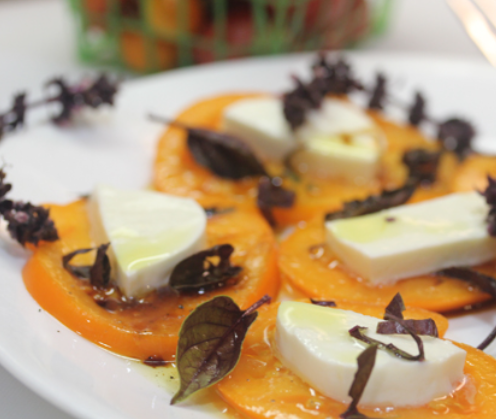
This recipe produces a Caprese salad using Lemon Boys. The yellow color of the tomatoes contrasted with the other ingredients makes an inviting salad. Making this recipe is wading into Italian cuisine albeit with a twist. Caprese salad is part of Italian cuisine.
Originally, Caprese salad is made using fresh mozzarella, tomatoes, and sweet basil, seasoned with salt, and olive oil. his recipe follows the same path nevertheless using Lemon Boy tomatoes and basil leaves and flowers in particular. Other ingredients in the recipe include extra virgin olive oil, balsamic vinegar, freshly ground pepper, kosher salt, and fresh mozzarella. View Recipe.
Lemon Boy Tomato Sauce Recipe
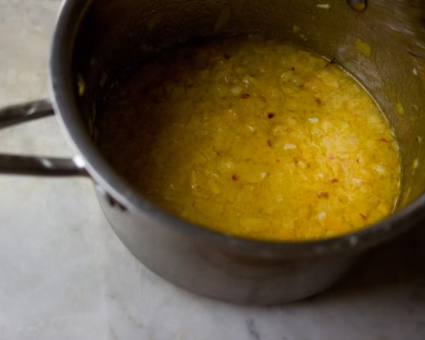
This recipe could be made with any Golden or yellow tomato. The sauce out of it will be good to use as a lasagna base, on pizza or pasta, or anything else one could consider experimenting with. The sauce will be garlicky with a sting introduced by the red pepper flakes.
Other ingredients in the recipe are extra virgin olive oil and fine-grain sea salt. The Lemon Boy tomatoes will first be cored of all seeds and then chopped into cubes. The tomatoes will be cooked just long enough for them to start breaking down. The recipe takes 15 minutes to make and produces 2 cups, 9 oz. or 275 ml of sauce. View Recipe.
Yellow and Red Tomato Pico de Gallo Recipe
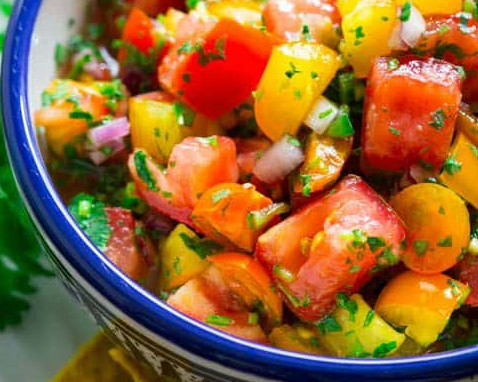
Pico de gallo is a type of Mexican salsa that also has a number of other names such as salsa Fresca, salsa Bandera, and salsa Cruda. This recipe produces a colorful yellow and red tomato Pico de gallo. This is low carb, vegan, and gluten-free dish that has only 18 calories per serving.
Other ingredients going into the recipe include fresh cilantro, red onion, jalapenos, and lime juice. On the jalapenos, you could also substitute these with pimento peppers. This non-cooking recipe takes 15 minutes to make and produces 4 cups. View Recipe.
Lemon Boy Tomato Salad Recipe
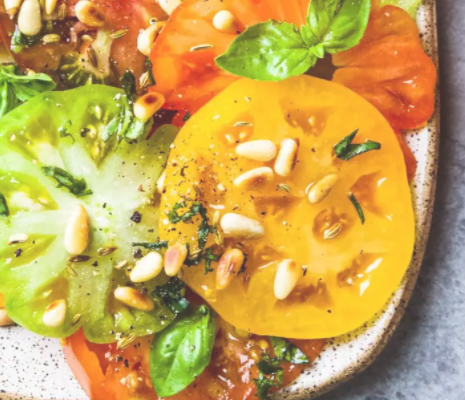
Originally, this salad calls for the use of yellow and red heirloom tomatoes. There is an opportunity here to use Lemon Boy tomatoes in place of the yellow heirloom tomatoes. In addition, regular beefsteak tomatoes could also be used to replace the red heirlooms.
Even with this twist, the recipe still maintains its colorful appeal yet with a Lemon Boy flavor in the mix. Other ingredients will be pine nuts, olive oil, salt, and pepper as well as fresh basil. This recipe involves no cooking and takes only 10 minutes to make. Prepare the recipe soon before the meal as it does not store very well. View Recipe.
Growing Lemon Boy Tomatoes
Growing Lemon Boy tomatoes is very much similar to growing regular red tomatoes of any kind. The tomatoes can be started from seed or from transplants. Since the Lemon Boy is an indeterminate habit cultivar, cultural practices of growing indeterminate tomato plants must be followed. Ideal spacing when planting the tomatoes should be between 24 inches to 36 inches or 60cm to 90 cm apart.
Like all tomatoes, Lemon Boy is a warm, summer-like weather tomato. Although the tomato can be started indoors 6 to 8 weeks before the end of cold weather using an indoor kit (example), it can only be put in the ground when the weather is warm.
Lemon Boy tomato is not fussy about the type of soil the tomato plant is raised in. This is the case with just about all tomatoes. However, it is recommended to use well-drained, fertile loam soil with a pH of between 5.8 to 7.0. To prevent blossom end rot disease, bone meal is added to the soil to preempt any calcium deficiency the main cause of blossom end rot.
Lemon Boy plants will need the same level of care and maintenance as regular red tomatoes. As a vining tomato, the grower must support the plant with a strong trellis or cage. To minimize the risk of splitting or cracking, tomatoes must be kept well watered avoiding dry spells. Splits in Lemon Boy tomatoes can occur when watering follows a drought. Tomatoes are forced to rapidly take up water and stretch their thin skin.
Growing Lemon Boy Tomatoes in Containers
Apart from growing Lemon Boy in the ground, it is also possible to raise the tomato in containers. An important point to note, however, is that unlike determinate tomatoes such as patio tomatoes, indeterminate tomatoes have a more extensive root system. For this reason, only suitable containers which are wide enough and deep enough must be used to grow Lemon Boy tomatoes.
When growing Lemon Boy tomatoes in containers, use a 24 inch or 60 cm diameter container to grow only one Lemon Boy plant per such container. The container must have a depth of at least 12 inches to 18 inches or 30 cm to 45 cm and have drainage holes. Alternatively, fabric pots (example) may also be used of at least 20-gallons in volume. Fabric pots will not need drainage holes as they are designed to drain excess water through the fabric itself.
The growing container is filled with rich soil that is able to sustain the Lemon Boy tomato plant for the duration of the season. Recommended soil recipe for growing tomatoes in containers is 60% crummy soil i.e. backyard garden soil, 20% mature compost, and 20% peat moss. In addition, bone meal is added to the soil to guard against blossom end rot. Powder copper fungicide is also mixed into the soil for fungal blight disease.
Even when grown in pots or containers, your Lemon Boy tomato plant will need trellising or some form of support. More careful maintenance will be required especially in respect of watering as potted plants tend to dry out quicker and often. Furthermore, soil nutrients will also need regular replenishing as they are lost through leaching due to regular plant watering and the resultant runoff. It is thus recommended to apply bone meal to the soil every two weeks throughout the plant life.
When to Pick Lemon Boy Tomatoes
After growing your Lemon Boy, the next question becomes when to pick the fruit. Picking Lemon Boy fruit is guided by days to maturity as indicated on the seed packet as well as certain cues given by the tomato fruits themselves. As earlier stated, Lemon Boy tomatoes reach maturity at about 85 days. Around this time the grower can look forward to picking the tomatoes.
However, being yellow tomatoes that ripen with a yellow color, it is not always a straightforward matter to determine exactly when to pick the tomatoes, especially for inexperienced growers. Lemon Boy tomatoes, like most tomatoes, have a color blush when beginning to ripen.
In the case of Lemon Boys, this is the beginning of their transition to lemon-yellow. The tomatoes can be picked at this point to ripen indoors or left to ripen on the vine. Left to ripen on the vine, Lemon Boy tomatoes turn yellow-orangish color when fully ripe.
There is more to learn and appreciate about when to pick tomatoes, for that we recommend our detailed feature here on When to Pick Tomatoes.
Lemon Boy Tomato Disease Resistance
Disease and pests are big issues when raising tomatoes. As earlier stated, Lemon Boy tomatoes are resistant to Verticillium Wilt, Fusarium Wilt Race 1, Nematodes tomato diseases. This is one of the reasons many growers prefer and also enjoy growing this tomato variety. It is resistant to some of the most menacing diseases known to tomatoes.
Also to note is that Lemon Boy Plus, a follow-up tomato variety developed more recently has an even wider disease resistance than the original Lemon Boy of 1984. Lemon Boy Plus has “high resistance to Tomato mosaic virus strain 0-2, Tomato Torrado virus, Fusarium wilt race 1-3 and Fusarium crown and root rot” according to Bayer. These are some of the considerations to take into account when deciding on buying Lemon Boy seed.
Conclusion
Lemon Boy tomato is a lemon-yellow colored tomato when ripe. The tomato was developed in the United States with some disease resistance to certain common tomato diseases. In recent years, an improved version of Lemon Boy has been developed. Although ripening with a yellow color, Lemon Boy is a legitimate tomato species similar to regular red tomatoes.
However, it has a different flavor which is mild with little sweetness compared to red tomatoes. Lemon Boy tomatoes have a variety of culinary applications and can be used alongside other tomato cultivars of different colors. Growing Lemon Boy is easy and follows a similar growing culture as other tomatoes.
Random But Good Reads:-
